So you’re thinking about running the Camino? What an adventure!
To follow is an in-depth guide that will tell you everything you need to know about running the Camino de Santiago.
We will cover:
- How many routes there are
- What the terrain, route, and elevation is like
- The best time of year to run the camino
- How long it takes to run the camino
- How to train for the Camino de Santiago
- How to get the pilgrims Credential
- Where to stay along the way
- What to eat along the way
- Luggage service options
- What to pack
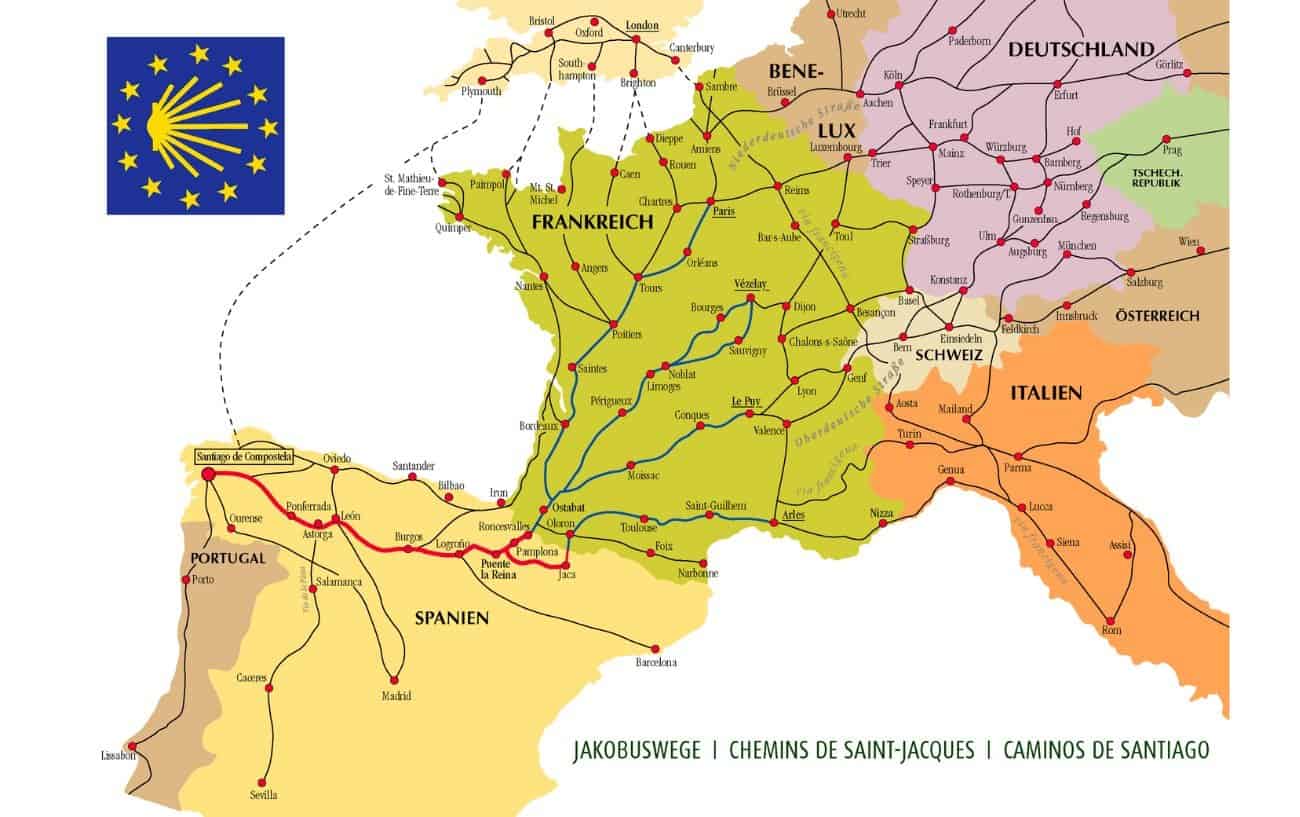
what is the camino?
The Camino de Santiago, AKA the Way of St. James, is a network of pilgrims’ ways to the Cathedral of Santiago de Compostela in Galicia, in the North West of Spain.
The most popular pilgrimage route to Santiago de Compostela is the Camino Francés, or the French Way, which spans 790km / 490 miles from Saint-Jean-Pied-de-Port in southwestern France to Santiago de Compostela and is divided in 32 stages.
The Camino is a pilgrimage route with spiritual origins, it is after all, a pilgrimage to the shrine of the apostle Saint James. However, today people decide to walk or run the Camino for a whole host of reasons, be that out of a love of trekking or a desire to reconnect with themselves.
This guide will focus on the French Way, although much of the information to follow can be applied to other routes.

how many routes are there?
There are 7 well-established Ways that make up the Camino de Santiago, most of which are across Spain:
- Camino Francés (the French Way) —790km / 490miles
- Camino Portugués (the Portuguese Way) — 616km / 383 miles
- Camino del Norte (the Northern Way) — 825km / 513 miles
- Camino Primitivo (the Original Way) — 321km / 199 miles
- Via de la Plata (the Silver Way) — 1000km / 621 miles
- Camino Inglés (the English Way) — 110km / 68 miles
- Camino Finisterre-Muxía — 118km / 73 miles
However, although these 7 routes are indeed the most traveled and well known, there is a web of trails that stretch out over many European countries and North Africa

what the route looks like | elevation and terrain
The Camino Francés starts with a steep section over the foothills of the Pyrenees. Then through the towns of Navarra and Rioja, the way takes you through woodland trails that wind through fields, farmland and villages.
The Camino, going through the region of Castilla y León, climbs up to the high plateau of the Meseta. Once on the plateau, the route is exposed and treeless, consisting of long stretches of gravel and dirt trails along barren agricultural land. Here you’ll pass through the stunning cities of León and Burgos.
Leaving the Meseta, the Camino crosses the mountainous region, the Montes de León, into Galicia. The Galicia section includes steep ascents, woodland trails, open uplands, and smaller rural roads that take you through villages and farmland.
You’ll then descend by road to Santiago de Compostela.
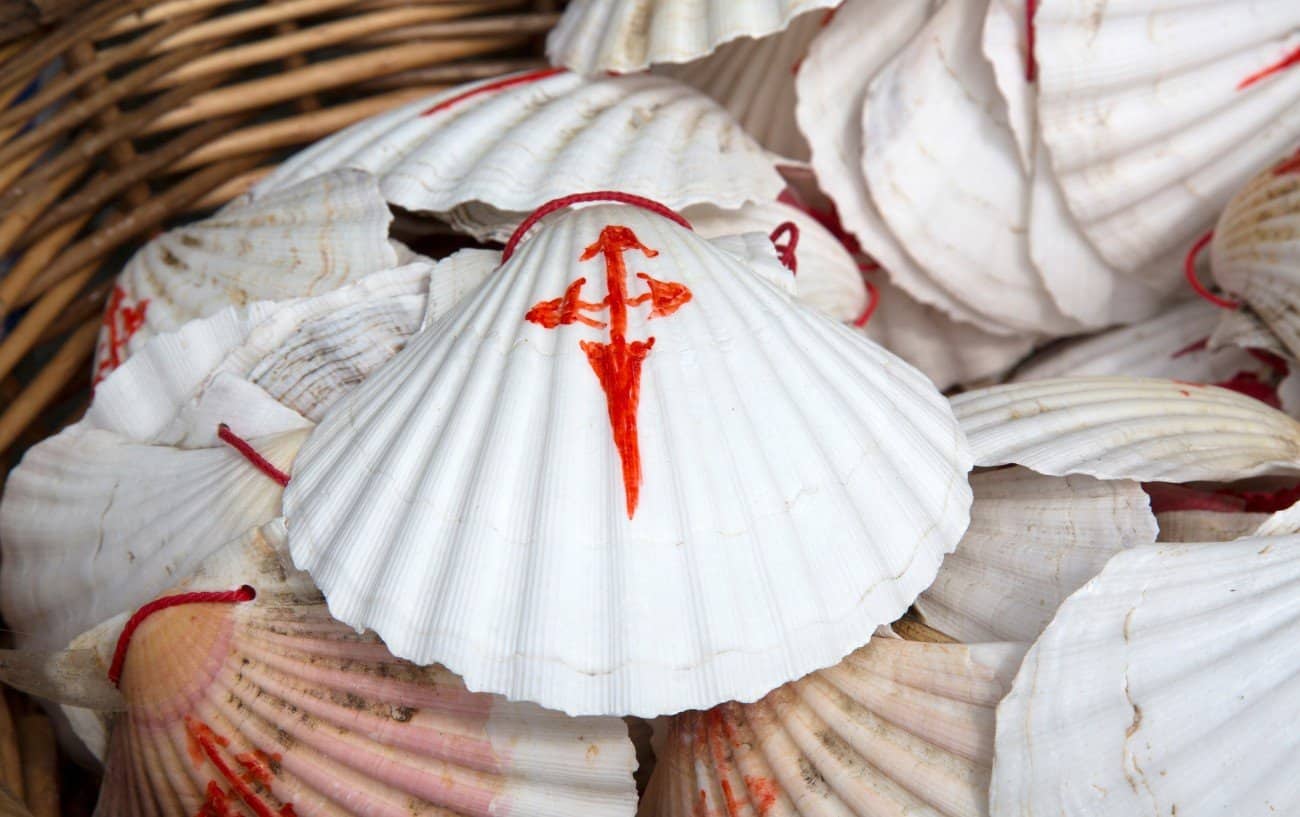
Elevation Gain
The total elevation gain from Saint-Jean-Pied-de-Port to Santiago de Compostela is a whopping 13,000 meters.
This is the equivalent of climbing Everest from sea level one and a half times.
Terrain
As a general overview here is the terrain breakdown:
505 km / 314 miles on trails
202.6km / 126 miles on quiet roads (mostly through small villages)
90.6km / 56 miles on main roads
The entire route is runnable, and there are no climbing or scrambling sections.

what time of year to run The Camino
It is possible to run the Camino Francés all year round.
You’ll find that some private albergues (pilgrim accommodation) do stay open all year round (apart from 15th and 31st of December), you’ll find no shortages of cafes and restaurants, and there will always be at least a few pilgrims on the route.
That being said, the temperature, rainfall, the cleanliness of the accommodation, and the number of people on the trail are all factors to consider when planning your running adventure.
Weather
The time of year you decide to run the Camino may be influenced by the weather.
There is no right or wrong time of year to run. Although it does get hotter in summer and colder and rainier in winter, the weather can always be accounted for with personal preference and proper preparation.
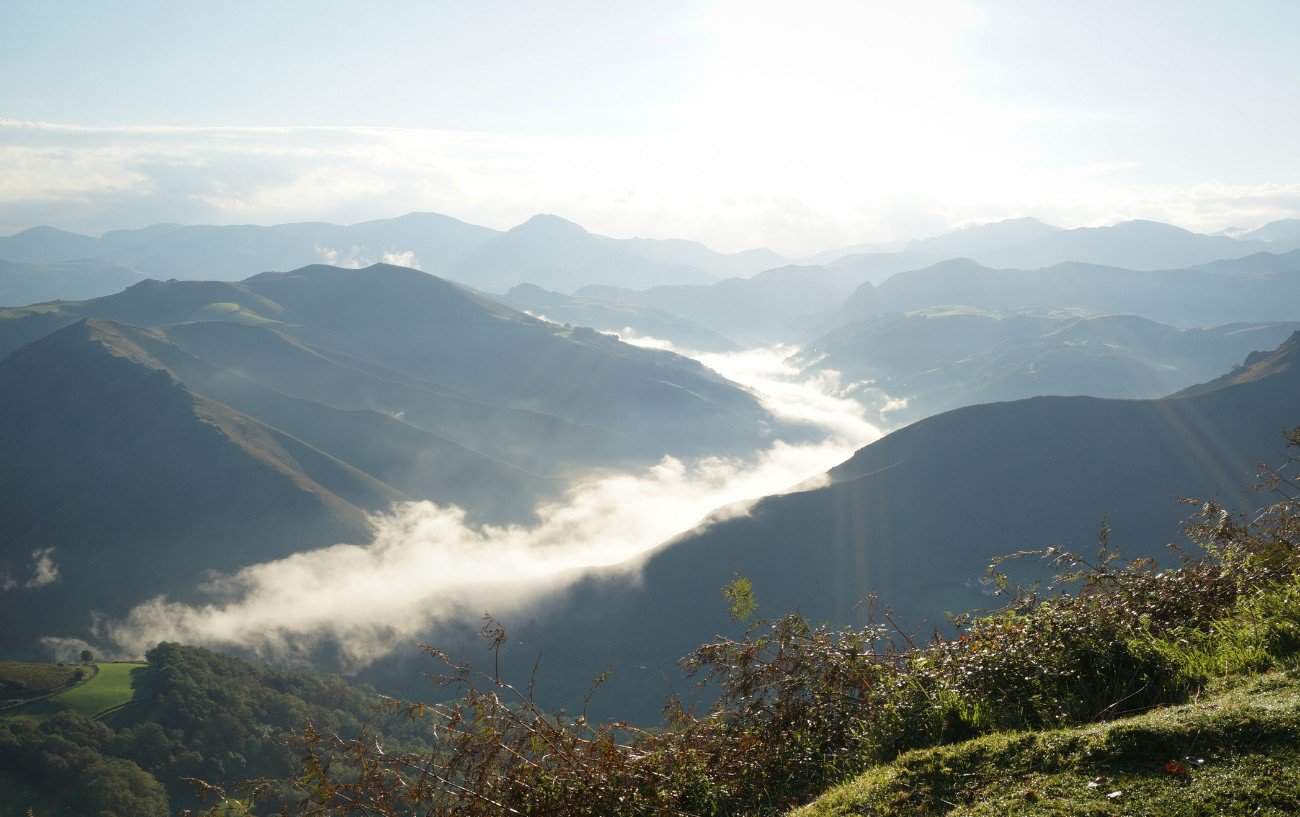
| JAN | FEB | MAR | APR | MAY | JUN | JUL | AUG | SEP | OCT | NOV | DEC | |
| Temp °C | 7.7 | 8.3 | 10.2 | 11.2 | 13.6 | 16.8 | 18.6 | 19 | 17.4 | 13.8 | 10.4 | 8.5 |
| Temp °F | 45.9 | 46.9 | 50.3 | 52.2 | 56.5 | 62.2 | 65.5 | 66.2 | 63.3 | 56.8 | 50.7 | 47.3 |
| Rainfall mm | 210 | 167 | 146 | 146 | 134 | 72 | 43 | 57 | 107 | 226 | 217 | 261 |
You’ll find that, for most, the sweet spot for running the Camino Francés will be from May-June and September-October.
During these months the weather will be milder, you won’t have to avoid the scorching sun in the middle of the day, and the amount of rainfall won’t leave you finishing each day sodden.
Busyness of the trail
The Camino Francés is the most popular and busiest of all of the routes, with 54.6% (2019) of all pilgrims taking this route. And with 186,000 pilgrims making the same journey every year, there are certainly times when the trail gets crowded.

As well as being the hottest months of the year, June, July, and August also tend to be the busiest months on the Camino de Santiago.
In 2019, 47% of all pilgrims arrived in Santiago de Compostela within these three months. 14% in June, 15% in July, and 18% in August.
During those peak months, you’ll find that some albergues, particularly the more popular ones, tend to fill up earlier in the day. You can often find people queueing outside before check-in time in order to secure a bed.
Although you will probably want to stay out of the midday sun, if you do end up running late into the day during these months, you might have to resort to private accommodation.
Bedbugs
Bedbugs are an unfortunate and itchy reality on the Camino. The sheer number of people passing through the same accommodation in the space of a season can mean that the bugs easily spread from hostel to hostel.
Running at the beginning of the season can be a good way to avoid bed bugs. Because albergues are open every day of the season, they are only really deep cleaned at the end of the summer months.

Otherwise, you can simply check for bedbugs by quickly lifting your bedsheet before you get into bed. Bedbugs crawl very slowly and are easy to spot.
To reduce your risk of carrying the bugs with you, don’t keep your bag on the bed, close your bag and put it in a plastic bag overnight, and check your sleeping bag for bugs in the morning.
how long does it take to run the camino
| Distance Covered Per Day | Total Number Of Days |
| 10k / 6 miles | 79 |
| 15k / 9.3 miles | 52.6 |
| 20k / 12.4 miles | 39.5 |
| 25k / 15.5 miles | 31.6 |
| 30k / 18.6 miles | 26.3 |
| 35k / 21.7 miles | 22.6 |
| 40k / 24.9 miles | 19.8 |
| 45k / 28 miles | 17.6 |
| 50k / 31 miles | 15.8 |
| 55k / 34.2 miles | 14.4 |
| 60k / 37.3 miles | 13.2 |

Rest Days
It may be wise to include some rest days in your Camino journey. They might just be the difference between you finishing and not.
When to take rest days is highly personal, just be sure to listen to your body to avoid getting injured or burning out.
How To Train To Run The Camino De Santiago
Assess if you’re ready for it
Before you consider training to run the Camino, you need to have a good amount of ultrarunning experience under your belt. 490 miles is no joke.
A couple of years of consistent (albeit seasonal) ultrarunning training is a good place to start. Completing a few self-supported long ultramarathons or multi-day races is key.
You should be injury-free when you begin training, and (of course) when you begin your running adventure.
Most importantly, you need to really think about how hard the challenge is going to be, and you need to be sure that it is within your capabilities.
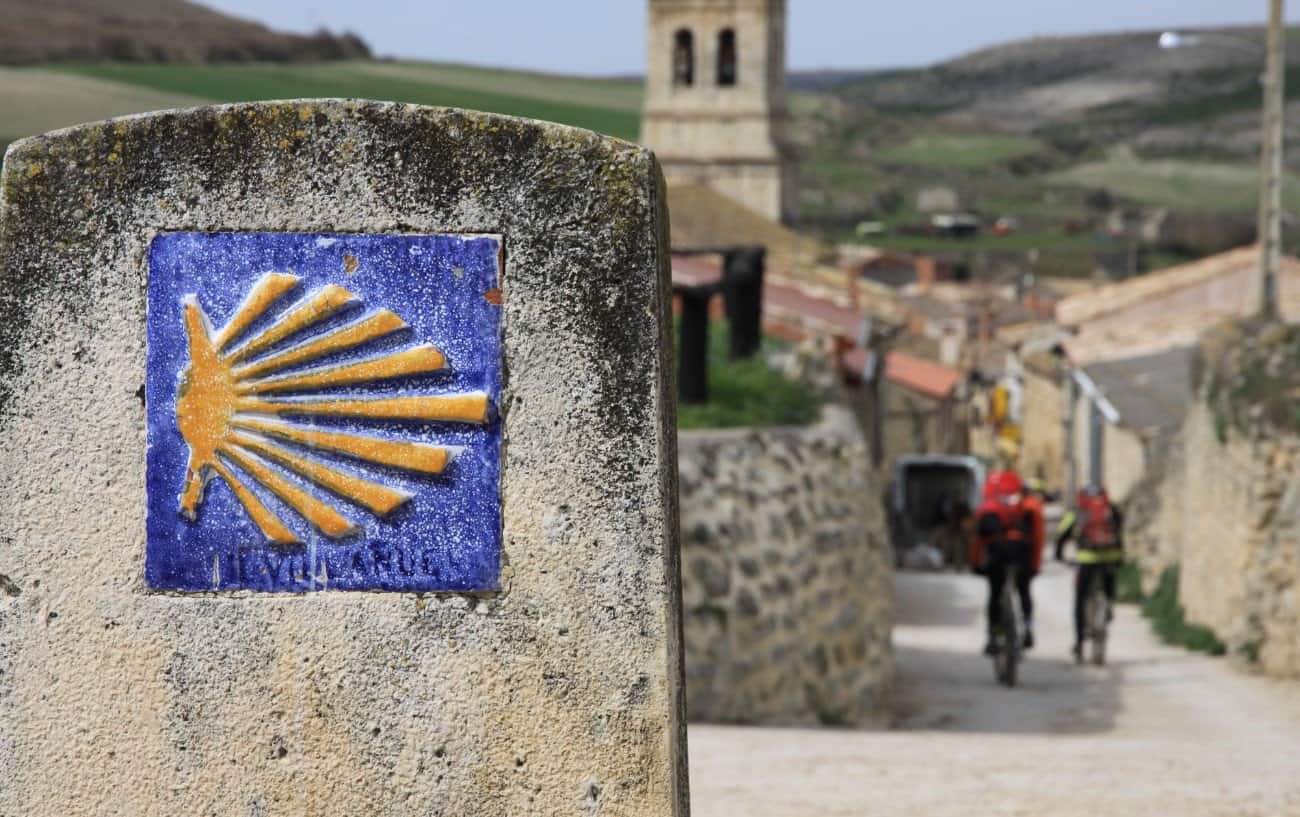
Training Plan Priorities
- Becoming an endurance monster
- Becoming injury proof
- Believing in yourself
What Your Training Plan Should Include
With these priorities in mind, you should:
- Build up your weekly mileage by no more 10% each week
- Strength train, incorporate a mobility routine, and work on your body’s imbalances
- Run 1-2 long runs per week
- Build up to a long run of 60-70 km
- Run at least two back to back marathons
- Not focus on speed work
- Work on your mental preparation: visualise, journal, and run when you really don’t want to

For additional resources on training for a multi-day running adventure, check out our FREE STAGE RACE TRAINING PLAN!
what is a pilgrim’s Credential and where to get one
A pilgrim’s credential dates back to the Middle Ages and is a sort of cardboard passport for pilgrims.
You collect stamps from hostels, town halls, restaurants and bars, and churches in your Credential, and to verify your pilgrimage, you must collect at least one stamp from each of the 32 stages of the route.
Places offering stamps will be clearly marked and you’ll have no trouble collecting them.
You can get your Credential from any establishment nominated by the Cathedral in Santiago de Compostela.
You can pick up your Credential from Pilgrim’s Office in Saint-Jean-Pied-de-Port.
The Credential typically costs 2 euros.
Once you arrive in Santiago, you’ll be able to show your passport in Pilgrims’ Office, (Rúa Carretas, 33) and receive an official document, also known as a Compostela, to say that you have completed the pilgrimage.

where to stay Along The Camino De Santiago
Albergues
Albergues are the most popular and quintessential type of accommodation on the Camino. They are a fantastic place to socialize and connect with other pilgrims, and are often touted for being places of true Camino spirit.
An albergue is essentially a hostel. Inside, you’ll most often find bunk beds, shared bathrooms, a communal area, and (most often, but not always) a kitchen. Some albergues even offer communal dinners.
Most albergues are directly on the Camino route, and if they are slightly off the trail, there will be arrows and signs guiding you to them.

There are two types of albergues: public and private. Here are the main differences between the two:
| Amenities | Public | Private |
|---|---|---|
| Price | 5 – 7 Euros | 10 – 12 Euros |
| For pilgrims only | yes | no |
| Need a Camino Credential | yes | no |
| Can stay for more than 1 night | no | yes |
| Can be booked in advance | no | yes |
| Allow luggage delivery | no | yes |
| Doors close at 9 pm | yes | no |

Public Albergues
- Owned by the municipality.
- You can’t book a bed in advance.
- Larger than private albergues.
- You can only stay one night.
- Check in is typically from 1pm.
- The front doors close at 9pm.
- Check out is at 8/9am.
- Bedding and towels are not provided.
- You need your Credential to stay the night.
Private Albergues
- Privately owned.
- You can book in advance.
- Smaller than private albergues.
- You can stay multiple nights.
- The facilities are usually better- kitchen facilities, common area.
- You don’t need your Credential.
- Bedding and towels are not provided.
- Check in and check out time is often more flexible.

Hotels and Guesthouses: An Overview
If a dorm situation isn’t for you, you’ll find many hotels and private guesthouses along the trail.
Of course, they are more expensive than an albergue, but you get the privacy and luxury of your own space and have bedding provided for you.
Staying in a private room every now and then might be just what you need. On a rest day perhaps, or if you just want complete privacy and a good night’s rest after a long stint of socializing and running.
It’s important not to burn out on the road, there’s no point stubbornly sticking to albergues if it sabotages your chances of finishing the route.
Although, if you’ve never stayed in a dorm or hostel before, and you don’t think you’d be keen, I urge you to give it a go! Maybe do some research and find a highly rated albergue to stay in for a night or two. You might find that you love the community aspect.

Camping: An Overview
Wild camping is generally not allowed in Spain but there are some campsites along the Camino Francés. Although, if you opt to camp as your main accommodation, you may want to plan your route more carefully as they are more sparsely than other accommodation types.
The main downside with camping is that you’ll have to carry your sleeping arrangements with you as you run: a tent, mattress, sleeping bag.
Unless you go in the summer months when rain is unlikely and opt to not bring a tent, you’ll find that running 790 miles with a camping setup is less than ideal.
Unless you just love camping, given the fact that albergues are cheap and regularly available, camping is not worth the hassle.
navigation
The entire Camino Francés route is clearly waymarked with yellow arrows and shells.
However, mistakes do happen and it is always good to have a backup. Downloading a GPS map of the Camino on your phone is a good backup plan that takes up no extra space.
Backup plan number 2- memorise this line: “¿Dónde está el Camino?”
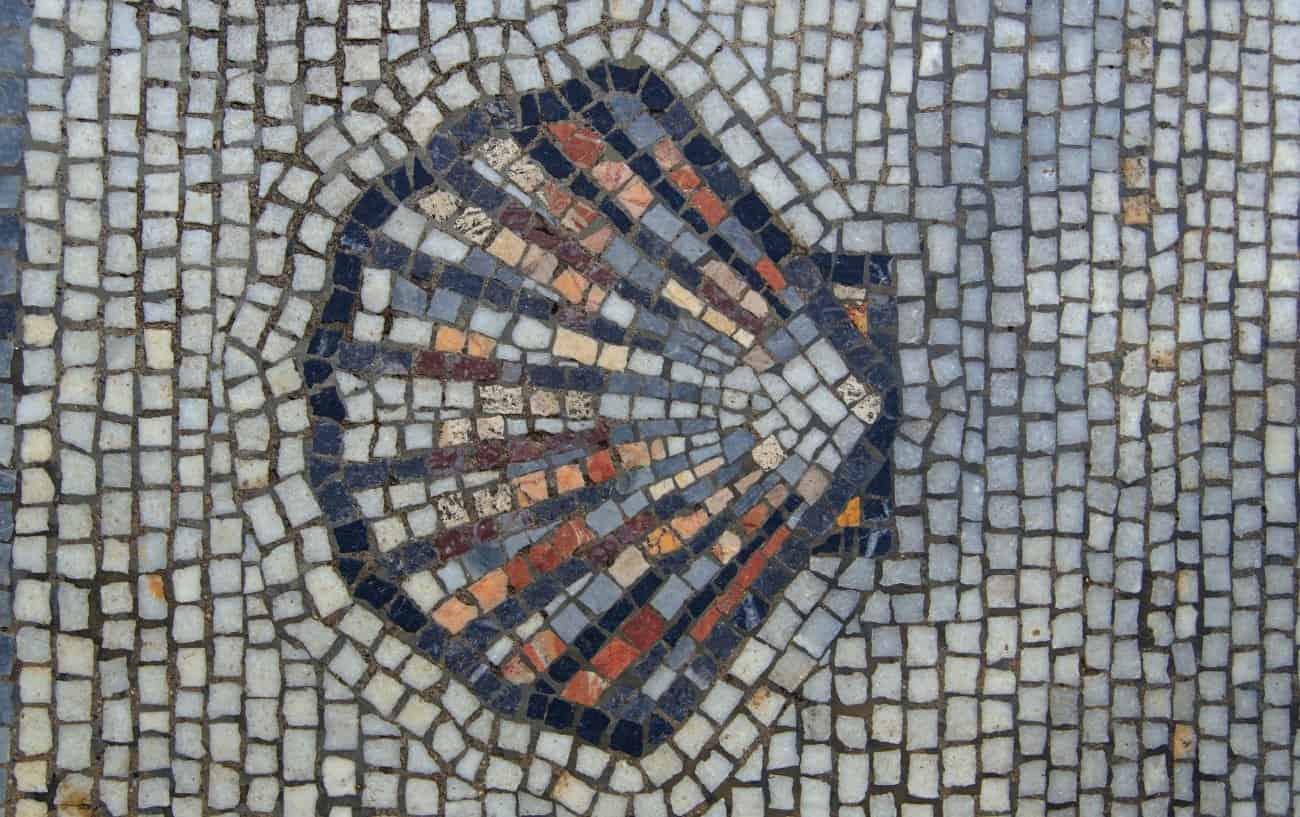
where to eat
You need to pack in the food when running the Camino. Make sure to always carry emergency food supplies with you and to always have dinner before you collapse in a dorm, regardless of how tired you are.
Breakfast
If you stay at a hotel, or in some private albergues, breakfast is usually included in the price of the booking.
Otherwise, coffee shops (or bars in Spanish) typically open between 6.30 and 7.00 am.
If you’re planning on setting off long before this to beat the heat of the day, you might want to consider arranging your breakfast the night before- maybe a pastry or a sandwich.
Bars will serve coffees, teas, juice, pastries and sandwiches.
Lunch
For lunch you’ll be able to pop into a bar and grab a baguette sandwich, or bocadillo for around 5 euros or less. Otherwise, you’ll find supermarkets along the way where you’ll be able to grab snacks to keep you ticking over until you reach your final place for the day.
Beware! Restaurants and bars close around 3-4 and reopen for dinner at 7-8pm! You don’t want to be caught out hungry between these times.
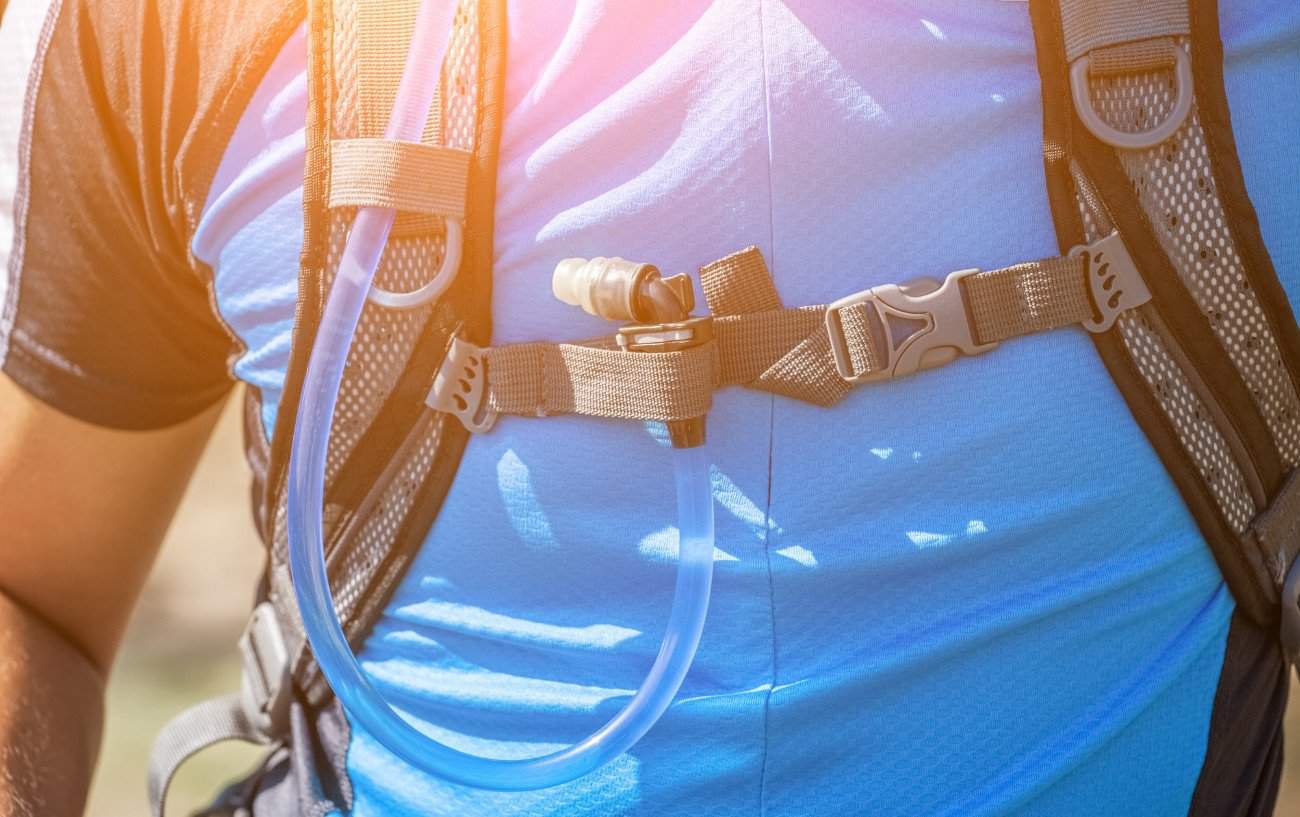
Dinner
Some albergues offer an evening meal. If this is an option, go for it! Sitting around the table with fellow pilgrims is a wonderfully life-affirming experience.
If your albergue doesn’t offer a communal meal and you still fancy a satisfying warm meal, many restaurants along the Camino offer a Pilgrim’s Menu also known as a Menú para Peregrinos.
The Pilgrim’s menu typically includes a first course, main course, bread, a drink, and a dessert. There is a reduced price for pilgrims, and the whole meal generally comes to under 10 euros.
Water
Finding water along the camino is fairly easy.
The route is peppered with water fountains for you to refill your bottles and water bladder from. Just make sure that they say “agua potable” on them. Don’t drink the water if the sign says “no potable” or “agua sin garantía sanitaria.”
Always make sure to keep your water topped up, as sunstroke in the summer months is a real threat.

Camino Luggage Transport services
Plenty of companies offer a luggage service. They will arrange for your luggage to be transported from one stage to the next.
This can be a great option if you want to not have to wash your clothes each night, if you want to pack snacks from home, or if you want to bring more than one pair of shoes with you.
Opting for a luggage service is no cop out! It may well save your joints a lot of unwanted stress.
The price of a luggage service ranges from 4 euros to 7 euros per stage.
How does it work?
It couldn’t be easier! You’ll find that at each albergue you stay at there will be a luggage service option.
In the reception of each albergue you will find envelopes from various luggage transport service companies. All you have to do is fill in the details on the envelope, put your money inside, and attach the envelope to your bag. Your bag will then be transported to the next destination that same day.
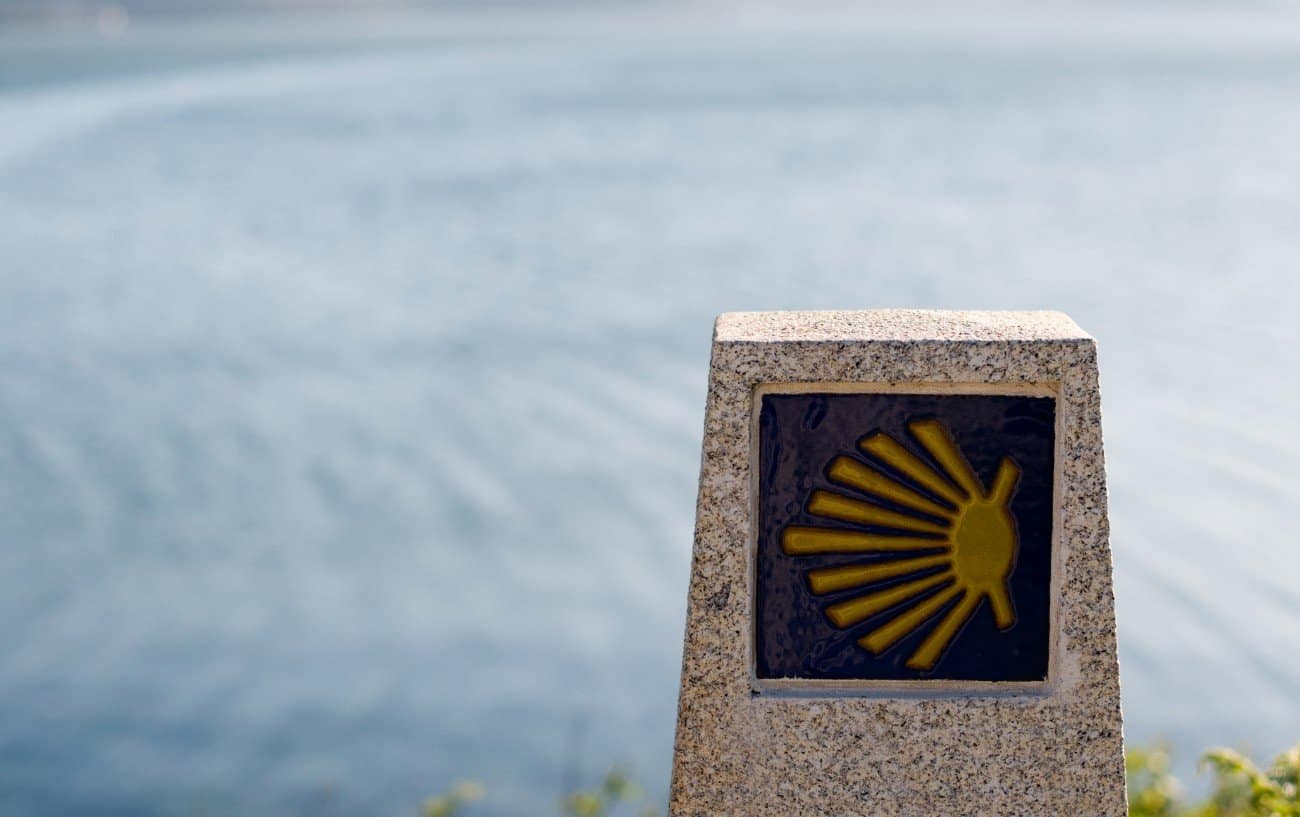
To avoid any mishaps, is important that you let someone at the albergue know that you require a transport service as soon as you arrive.
Luggage transport services allow you to transport rucksacks, suitcases, all sorts!
You can also pay for a luggage service to transport and keep a bag in storage from Saint-Jean-Pied-de-Port to Santiago de Compostela.
What to pack – 10 essentials
If you’re running the Camino with a luggage transport service, you’ll be able to liberally bring as much as you like with you in your transported bag and tweak the contents of your day bag as you go. But this is a list for those who will travel with just their backpack and nothing else.
Packing to run the Camino de Santiago is a delicate balance between bringing what you need and ensuring that you are traveling light.
Bring only the essentials, make them light, and leave any luxuries at home.

#1: A Running Pack
Investing in a comfortable running pack is key. 490 miles is a long way to travel with a pack that jumps around and rubs at all.
Pick a running pack that is big enough to carry everything you need. A 20L running pack should be enough. If you can squeeze everything you need into 15L, do that!
#2: Your Pilgrim’s Credential
You’ll need this if you’re staying at public albergues and to verify your pilgrimage if you want to obtain an official certificate in Compostela.
#3: Running Poles
These can be useful to reduce the strain on your legs. Just make sure that you familiarise yourself with them in training.
#4: Clothing
Bring a waterproof jacket, a warm top layer, a spare change of running clothes, and a lightweight comfortable outfit for the evenings.
You should be able to handwash one set of clothes when you arrive at your alberge and have it dry by the morning.

#5: Toiletries
The obvious tooth brush and tooth paste, deoderant, shampoo, and soap.
Also be sure to bring travelwash to wash your clothes each evening.
And earplugs are an essential to combat snorers in the dorm room.
#6: Sun Protection
A hat, sunglasses, and suncream are essential. Long hours under the Spanish sun will take their toll if you don’t take precautions.
#7: Bedding & Towel
If you plan on staying in albergues at all you’ll need to bring your own. Some albergues offer disposable plastic sheets for 1 euro, and some provide a thick scratchy wool blanket. Neither of these options is ideal.
A microfiber towel and a sleeping bag liner are recommended.
If you’re running in the summer months, a sleeping bag liner will be enough, If you plan on running in colder weather, you’ll have to bring a sleeping bag.

#8: Cash, a Portable Charger, a Card, an ID, and a Phone
Some bars you’ll find along the way will be cash only. You also need all of these things to get you out of any sort of sticky situation you find yourself in.
#9: First Aid
Some sort of anti-chafe cream is a must. You’ll want to avoid chafe at all costs as you’ll have a long journey ahead of you. Blister treatment and mosquito repellent are also good items to keep on you.
There will be plenty of pharmacies along the route incase you need to pick up specific treatments along the way.
#10: Hydration and Food
Always carry bonk-busting emergency food on you and keep your hydration bladder or bottles topped up. Salt tablets are a good idea too.
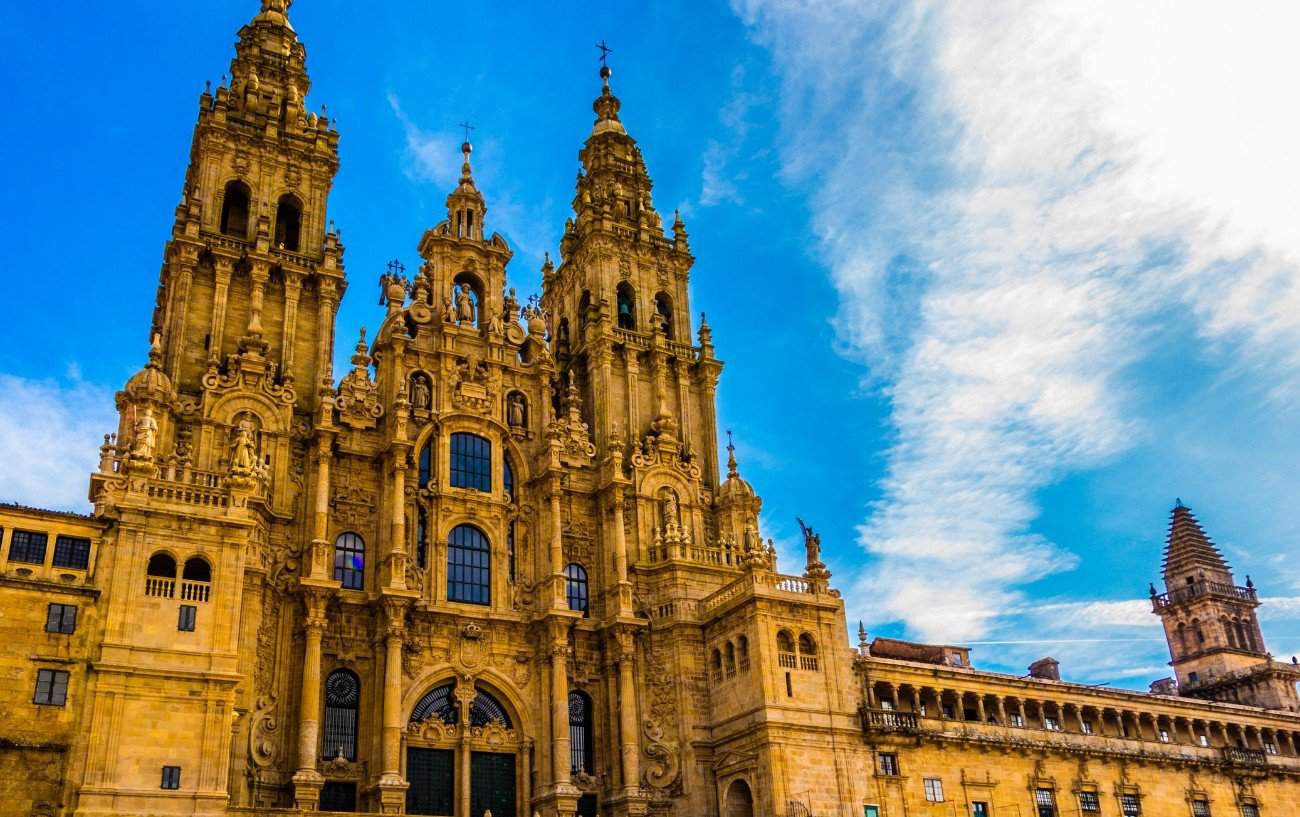
And that’s everything you need to know before taking on the greatest adventure!
Be sure to check out our FREE STAGE RACE TRAINING PLAN!
You’ll find that this plan is pitched at those looking to take on a shorter stage race than the Camino de Santiago. However, it is still completely relevant as its primary focus is to get you comfortable running for long distances over several days.
Buen Camino!











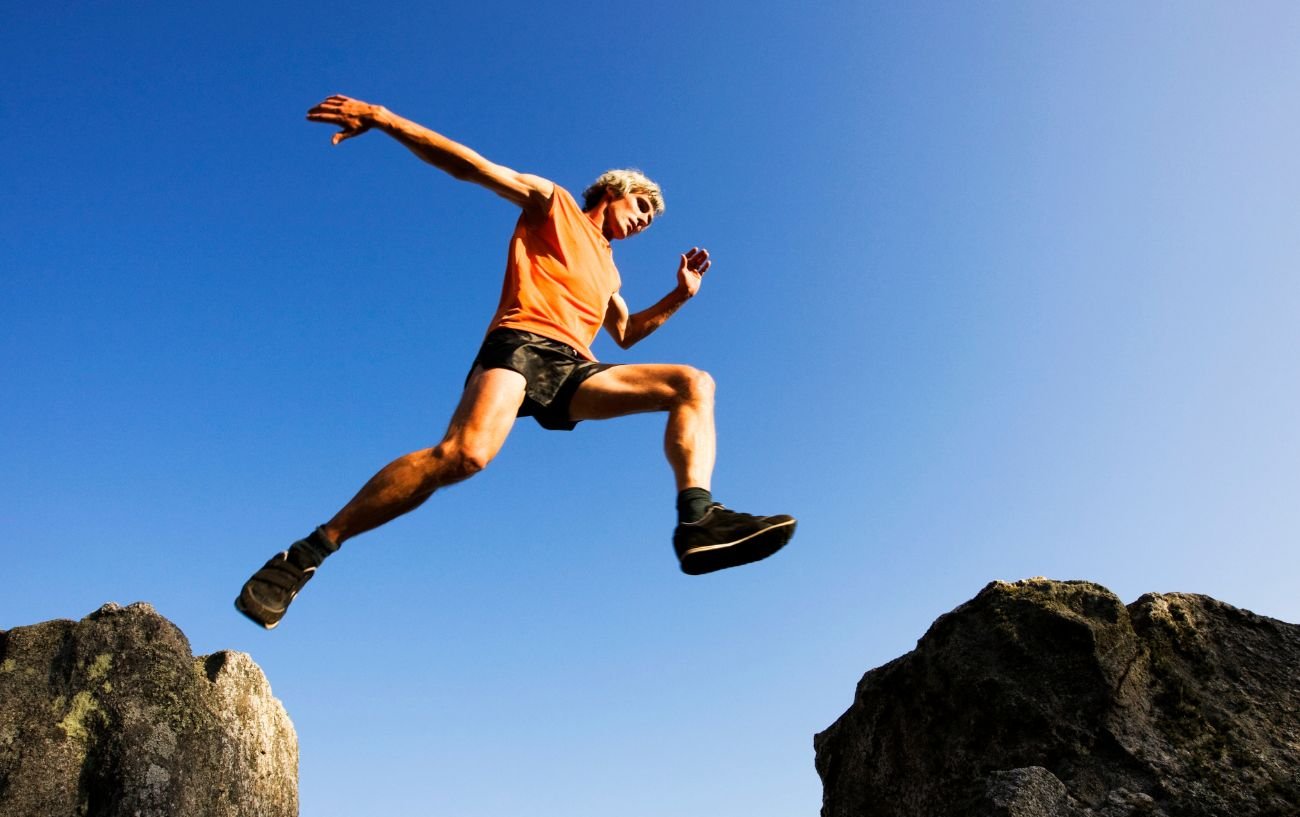

After running ultras for almost 20 years, Inso wish I would have done the Camino but I just had my hip replaced 2 weeks ago and will be in the Camino in 6 months🙏